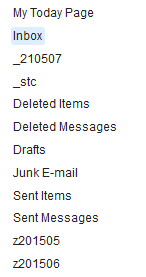It’s OK To Lie On Web And Mobile Security Questions

Your first love. Your first pet. Your first car. And Mom – what was her last name before she got married?
The preceding paragraph was not a trip down memory lane. Rather it is a list of some of the most commonly asked questions on Web sites and mobile apps to verify who you are. Where at one time a simple username and password were enough, now you could be answering one of almost a half-dozen questions and answer pairs to log into an online service. With everyone wanting a higher degree of security, these types of extended login functions are becoming more commonplace.
But I have a secret to share with you. Lie!
When these challenge questions started popping up on online services, I pondered their need, as well as the fact that more personal information about myself would be out there in random databases, and probably not encrypted or secured as well credit card information (or as well as credit card information should be secured!). Though these seem harmless questions, the information can be very personal, yet for some reason we share it.
That’s when I decided to lie – rather than put my Mom’s maiden name on the Web or app form when it is asked, I lied. Instead I put in something different altogether. For ease of remembering, I often use the same answers to similar questions, bit if I am using an online service I may not go back to, I will completely make something up.
The advantage to using a made-up answer to a security challenge question is that should this information get hacked into or otherwise compromised, further personal details of my life are not out there. The disadvantage to this is you will need to remember or log somewhere these questions and answers. Granted there are online secured “wallets” for this type of information, but those too need passwords and perhaps challenge questions and answers too.
Until something better comes along for secured access to online services, username, passwords and challenge question and answer pairs will be prevalent. By using an answer other than the truth, you can feel a little more private. Plus nobody has to know your first pet was a French poodle named Fifi Petunia Marmalade.
This is from The Hot Iron, a journal on business and technology by Mike Maddaloni.
Did you enjoy this? Subscribe to The Hot Iron by RSS/XML feed or Read by Email
Business • Strategize • Technology • Web Design • (0) Comments • Permalink2 Questions I Ask Anyone Thinking About Blogging

As someone who is been blogging now for over eight years personally and has built commercial blogs for many clients, I can to get asked by a lot of people about blogging. Many of their questions get down into the weeds and minutia and details of a blog, everything from readership to monetization. As they spout these questions I sit back listen and then a smile usually comes over my face. I wait for them to pause and then asked me what I think.
When it's my turn, I look them straight in the eye and I tell them I'm going to ask them 2 questions that are most likely unrelated to anything they've already brought up so far. Those questions are:
1. Why do you want the blog?
It's a simple enough question, but this is something that will lead to eventually creating a vision and mission statement for the blog. For the eventual reader of the blog, this will tell them why they should not only read post the blog now but why they should come back and read in the future and even subscribe to its RSS feed or by email. Having a mission statement and goals for the blog will be is important as it helps not only to drive content but also to motivate the writer.
2. Are you prepared to commit to writing on a regular basis?
As a blog is a Web site that is regularly updated with new content, ideally your blog should also be updated on a regular basis. So the question I ask people is if you are ready to write on a “regular basis.” What is a regular basis? That is really up to the writer if it’s once a day, several times a week, once a week, every other week, etc. Whatever it is, it should be have some consistency to it. If you have been a regular reader of The Hot Iron you will know that I have change my regular basis many times over the years and now try to commit to at least once a week, but even that for myself is sometimes a challenge with my personal and professional schedule. That is why I like to ask people that question in particular.
And that is it
Note these questions do not address anything about the topic of your blog, the voice of your blog, the technology used for your blog or anything of such. As you embark down the path of deciding if you're want to have a blog of your own, I like to pull it up to the 50,000 foot level and ask basic questions and then from there determine if blogging is something that you want to pursue.
So what do you think – are these basic enough questions to ask people or are they too simple? Or do you think that they are right on the mark? I welcome the thoughts of people who were considering blogging as well as people who have been blogging for many years on questions of people should consider before they go down the path I've enjoyed very much – a great journey of creating and writing a blog.
This is from The Hot Iron, a journal on business and technology by Mike Maddaloni.
Did you enjoy this? Subscribe to The Hot Iron by RSS/XML feed or Read by Email.
Blogging • Business • Strategize • (0) Comments • Permalink
My Takeaways From The Book Scrum by Jeff Sutherland
Imagine a workplace where not only you can work without impediments to your progress, but one where you have a say in what and how you do it? And to top of it you’re much more productive and successful and so is your ultimate business customer.
So what’s the catch? You simply have to drop the current way you work and adopt something called Scrum.
What is Scrum? The origins of the word come from the sport rugby, where a tight formation of players move and work together to get the ball forward. The term Scrum here has its origins on software development, where a small team of people work closely together to build software. The difference is in how they build it – using an iterative cycle of a few usable features at a time rather than defining everything upfront, then months (or years) later receiving software with all of the features.
The later process I described above is commonly referred to as “waterfall.” As one giant cycle produces all software (or the falling water) and the remaining project time is used to fix bugs and make changes in the business process (or the water flowing from the waterfall). It is far from a perfect system, especially as it doesn’t take into consideration business changes, let alone end users not always knowing what they want, both upfront or a year from now!
The former process I described above is Scrum, and was created in the 1990’s by Jeff Sutherland and Ken Schwaber. This book, Scrum: The Art of Doing Twice the Work in Half the Time, is written by Sutherland, and presented in a format to introduce Scrum to the wider world outside of software.
As someone who has built software all of my professional career and then some and has used scrum formally in some of my past roles, I was interested to read this book, not only because it is written by one of the co-founders of Scrum, but to learn more how it can be used in other aspects of business and life.
Among my many thoughts from reading Scrum, I have the following takeaways:
- Building software – or anything really – is a journey – It’s hard to be perfect and know upfront everything you will possibly need in software you will use. Rather, admit it is a journey, build it over time, and get it closer to your needs while getting functioning features along the way.
- You have to be committed to Scrum to reap its true potential – Dipping your toes in the Scrum swimming pool will not give you the benefits of it. You have to fully commit to it. If you are hesitant to commit, read the book.
- If you don’t do it someone else will – Scrum as a framework is always gaining in popularity, and the number of people becoming certified in Scrum as well. If you or your organization is resistant to it, realize more organizations are always adopting it.
- I want to be Scrum Certified more now than before – after reading the book and hearing Sutherland’s stories of Scrum’s successes in business and beyond, I really want to take formal Scrum training and become certified more than I did before reading the book.
Scrum: The Art of Doing Twice the Work in Half the Time is a great read, for those who work in business or any organization. I wish I had this book years ago when I was starting my Web consulting business – not just for building the Web software but for the overall running of my business. It is packed with stories of its successful use in various industries. Though it is very supportive of Scrum, it is not a “fluffy” and rah-rah story – it gets straight to the point and reinforces all that is stated. The book concludes with a step-by-step plan for deploying Scrum.
This is the part of my book takeaways where I disclose why I read a book. As I said, when I heard of it, I needed to get it and bought it myself, and for 2 reasons. The first and most important is that I wanted to read the story. The second and anecdotal reason is that I once worked at the same company as Jeff Sutherland, and we once had a brief work-related phone call. As I read Scrum, I could hear his no-nonsense style, which added to the reading.
As I conclude this post, I have not decided whom to give the book to, as it is something I do after I read one. If you are interested let me know. If you have read the book, or based on this are interested to, I welcome your thoughts in the comments to this post.
This is from The Hot Iron, a journal on business and technology by Mike Maddaloni.
Did you enjoy this? Subscribe to The Hot Iron by RSS/XML feed or Read by Email
Book Take-Aways • Build • Business • Agile / Scrum • Strategize • Technology • Thrive • (2) Comments • PermalinkNew Approach To Managing My Email Inbox To Zero
 Over 6 years ago I wrote about a process I had then been following for almost a decade – managing my email inbox to zero. The idea was straightforward – your email inbox is not a to-do list or anything else. You take mail from it, and do something with it, just like the postal mailbox at your home. Doing this is something I continue to do – dare I say obsess over – now for over 15 years.
Over 6 years ago I wrote about a process I had then been following for almost a decade – managing my email inbox to zero. The idea was straightforward – your email inbox is not a to-do list or anything else. You take mail from it, and do something with it, just like the postal mailbox at your home. Doing this is something I continue to do – dare I say obsess over – now for over 15 years.
Like any process, a better way to do something comes along, including how I was managing my email. Where the basics of keeping the inbox to zero still applied, the one part that wasn’t working for me was the filing of emails. It became clear that while email is not a good task list, it is also not a good archive, especially how I was managing it. So I came up a new process I’d like to share with what I did with the emails I wanted to file.
A Better Way To File
While archives of email folders are searchable, have date/time stamps and so forth, pouring through email messages and threads was becoming more and more inefficient for me. To start, I had my email stored offline in an email client software, Mozilla Thunderbird, on my PC. If I needed something while away from it, I couldn’t. Even with all of the emails I had in the archive within Thunderbird, I rarely would have to go back far in time for something. Needless to say, I was continuing to save email message after email message, and it was cluttering my hard drive more and more.
The change to my filing was in 2 steps – the first was to eliminate Thunderbird from the picture and only use Web-based mail. The second was to create folders for email messages I was saving for a particular month, and only keep the current month and 2 past months in Web mail. Once a new month rolled over, I would create a new folder for it, then go through the oldest folder and either delete or save to my PC archive the individual email message as a PDF file. The accompanying photo to this post shows how my mail folders look – the “_201507” is the current folder, and those prefixed with “X” (namely so they will appear at the bottom of the list) are for the last 2 months prior.
I started this process back in March, and now we are at July. I have since cleared out 2 months of old emails, and probably only saving half of them. I have at ready-access email messages I need through Web mail and on my mobile device, and I have a more robust archive of my “stuff” on my personal hard drive.
In short – so far, so good.
Now I will get back to the 17 messages in my inbox. In the meantime, I’d welcome your thoughts on my revised approach, and feel free to leave them in the comments of this post.
This is from The Hot Iron, a journal on business and technology by Mike Maddaloni.
Did you enjoy this? Subscribe to The Hot Iron by RSS/XML feed or Read by Email.
Strategize • Technology • Thrive • (0) Comments • Permalink
Why I Am Walking In the Chicago Liver Life Walk On June 13 2015
 This year marks 15 years that I have laced up my sneakers, grabbed a bottle of water and a few family and friends and walked along a body of water for a great cause in memory of a great person.
This year marks 15 years that I have laced up my sneakers, grabbed a bottle of water and a few family and friends and walked along a body of water for a great cause in memory of a great person.
In 2001 I participated in the first of what is now called the Liver Life Walk, a walkathon in support of the American Liver Foundation, or ALF. It was literally a few weeks after my Mom lost her battle with primary biliary cirrhosis, or PBC, an autoimmune liver disease that inflicts women. At the time I really knew little about liver diseases, heck about how the liver works in concert with all of your body. Since then I have learned much, including the work the ALF does in research, education and advocacy for the fight against the many forms of liver diseases.
As I have done in the past, I ask you to join me, whether literally in walking with me in Chicago on Saturday, June 13, or by supporting my team, The “A” Team, by making a donation.
It goes without saying what this means to myself and to the cause. Thank you in advance for your support.
This is from The Hot Iron, a journal on business and technology by Mike Maddaloni.
Did you enjoy this? Subscribe to The Hot Iron by RSS/XML feed or Read by Email.
Announcements • Diversions • Thrive • (0) Comments • Permalink




